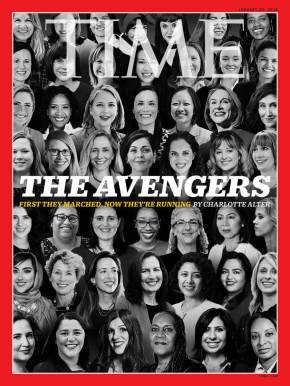 Your magazine cover sells your brand, not your issue. That’s the assertion of Ryan Derousseau writing in Folio last week.
Your magazine cover sells your brand, not your issue. That’s the assertion of Ryan Derousseau writing in Folio last week.
As he explains, with newsstand sales down across much of the industry, magazines are turning to other means to drive sales and boost readership. And that’s leading to a significant shift in cover design.
“Within all of this disruption, the cover no longer needs to draw eyes as people walk along the street, passing their local newsstand,” Derousseau explains.” Instead, it has become a marketing tool that magazines use to drum up publicity for new issues and offer readers an image on social to draw them to the website or latest cover story.”
By way of example, he talks about Time Magazine’s recent cover story about the women pursuing political careers that were inspired by the recent 2018 Women’s March.
“The cover design contains a degree of subtlety such that potential readers might not notice the gist of the story as they scan over it on the newsstand,” Derousseau notes. “But creative director DW Pine says the issue—and its cover—was a massive hit on social media.”
So if the purpose of the cover image is changing, how does that influence design?
“The aspect that has changed the most since the newsstand has fallen out of favor is cover lines,” he writes. “These one-line sales pitches that describe what’s in the issue have become less common on many magazine covers as creative directors focus on selling eyeballs online with an image.”
It’s an approach that the New Yorker has taken for years, according to art editor Francoise Mouly. Rather than aiming to draw newsstand readers in, their focus has always been “a separate art piece outside of the magazine that’s a reflection of the time or moment in which the artist is creating.”
Of course, this doesn’t mean all the rules of good cover design are up for debate.
“It has forced me to think about first principles of covers even more,” says New York print editor Jared Hohlt. “How long does it take you to understand this cover?”
As Derousseau says, “If it’s longer than it takes to scroll past the image online, then it’s too long. And that’s not much different than the time it takes to walk past a newsstand.”
For brands, this is a good opportunity to look at the cover from a wider perspective and focus not on what’s inside the magazine, but on what sets the brand apart. This is where iconic covers come from.
